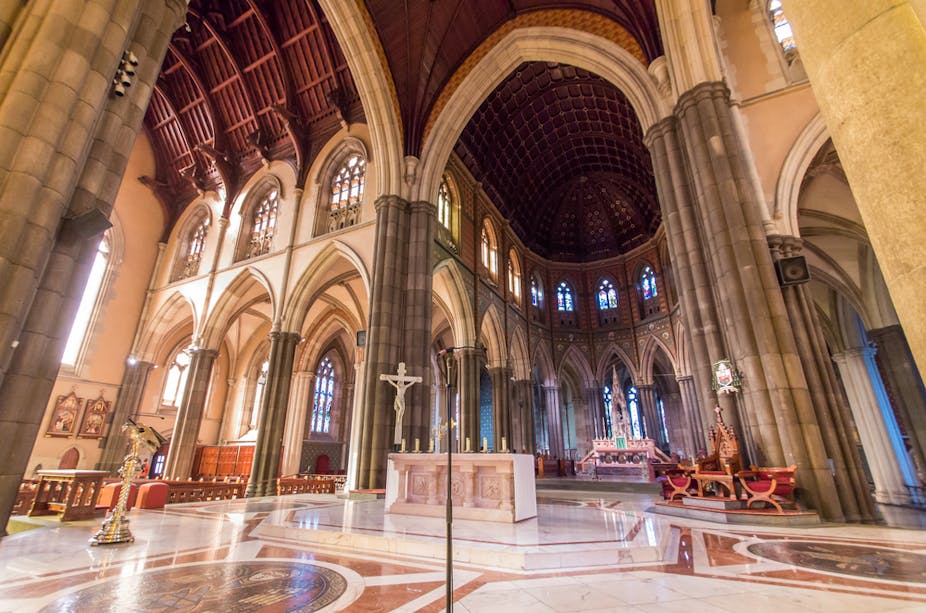The final hearing of the Catholic Church at the Royal Commission into Institutional Responses to Child Sexual Abuse opened on February 6.
The three-week hearing is investigating the church’s response to the crisis of child sexual abuse by clerics over a 60-year period, and particularly the church’s plans for child protection protocols and institutional change. The hearing (Case Study 50) is streamed live from the commission’s website. Members of the public are welcome to attend at any time.
The structure of the hearing is comprised of panels of experts who will report on the main issues raised throughout the 15 public hearings that the Catholic Church has been the subject of over the past four years. The panels are divided into topics that reflect the major concerns the commission has identified with church culture and practice. These include church governance, culture, clericalism, discipline and secrecy, the practice of confession, formation programs for clerics, Catholic education, child safety and risk management, complaint handling, professional standards, professional support and responses from the church leadership.
It is a long hearing, reflecting that the Catholic Church is the worst offender before the royal commission. It is also possibly the most complex in terms of managing change.
Prior to the hearing, a number of church leaders, including Archbishop Mark Coleridge from Brisbane and Archbishop Anthony Fisher from Sydney, warned Catholic communities that the evidence and data emerging from the hearing would be “grim”.
This was borne out as the introductory statement read by counsel assisting Gail Furness revealed on the first morning.
Over the past 35 years, 4,444 people made complaints of child sexual abuse in Catholic institutions. The average age of victims at the time of abuse was 10 for girls and 11 for boys. A total of 1,880 religious men and some women (5%) were identified as alleged abusers.
In the research sample, 7% of priests were identified as perpetrators. By far the worst offenders were in religious orders: for example, over 40% of John of God Brothers, 22% of Christian Brothers and 20% of Marist Brothers were identified as alleged perpetrators.
These figures are particularly shocking because the rate of disclosure of abuse by victims is generally held to be under 20%. This means that the majority of adults who were abused by clerics as children have not yet come forward. The implication is that the church may be dealing with cases of child sexual abuse for many years yet.
The breadth and depth of this tragedy are deeply rooted in the culture of clericalism, which positioned itself beyond any form of accountability and put the reputation of the church before the needs of affected children and their families.
As Furness indicated:
Children were ignored or, worse, punished. Allegations were not investigated. Priests … were moved. The parishes and communities to which they moved knew nothing of their past. Documents were not kept or they were destroyed. Secrecy prevailed, as did cover-ups.
Francis Sullivan from the Truth, Justice and Healing Council addressed the court, indicating there was no excuse for what had transpired.
So what of the expert panels in the first week? Did they provide any insight into the central issues and problems? Clearly the royal commission has spent big money in bringing together experts across Australia, the USA and Ireland, who have studied the impact of child sexual abuse from different angles.
The first week looked particularly at church culture and governance, including practices of secrecy and canon law, issues of discipline, the role of women (or lack of) in church leadership positions, and the nature of clericalism. There were some brilliant moments, in what was a mixed bag of evidence.
Tom Doyle, the US author and expert on canon law and child sexual abuse, spoke carefully and with authority on his experience as a canon lawyer. He identified clericalism as a major cause of injustice. He described it as a “virus infecting the church” that caused much damage, including spiritual abuse, which the church has barely recognised.
Neil Ormerod, professor of theology at ACU, noted that the Diocese of Adelaide had the lowest rate of child sexual abuse in Australia. He suggested this was because women have been in positions of institutional leadership since the mid-1980s, including that of episcopal vicar.
A number of experts noted that the clerical church was amateurish, lacked professionalism and accountability. For example, priests engaged in pastoral care are not required to undertake supervision or ongoing professional education, something that would now be unheard of in their secular counterparts.
Teresa Devlin, CEO of the National Board for Safeguarding Children in Ireland, did not mince her words as she described the failure of the Vatican to process claims of child sexual abuse in a timely manner: most take at least three years. She also noted that the church needs to be vigilant in safeguarding children as cases against clerical perpetrators continue in Ireland.
The panels due to give evidence this week and next will concentrate on professionalism, formation and community and education services. There are no simple answers here, except that it is clear that massive institutional reform is needed if the church is to deal effectively with the aftermath of the travesty of child sexual abuse.

